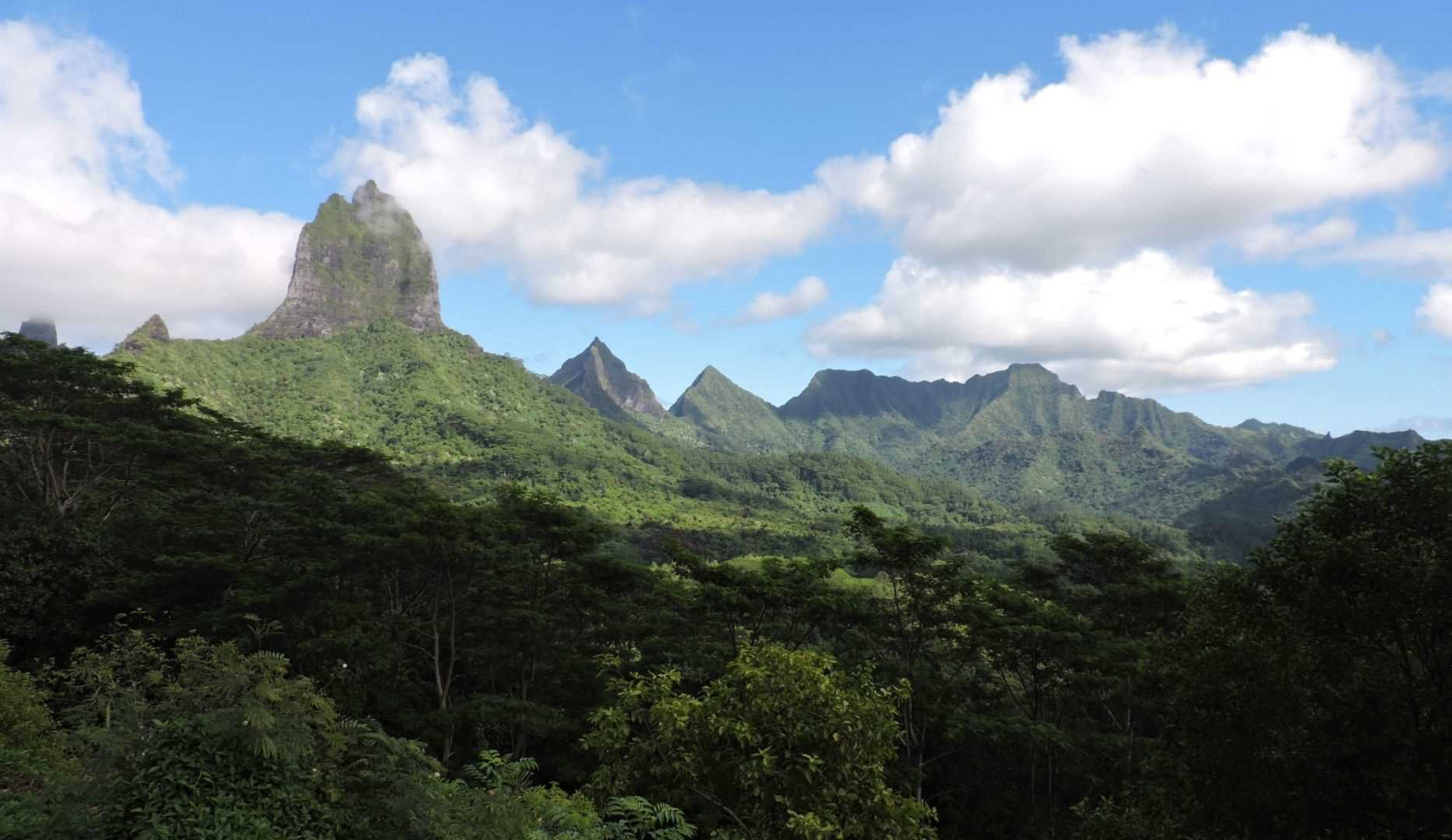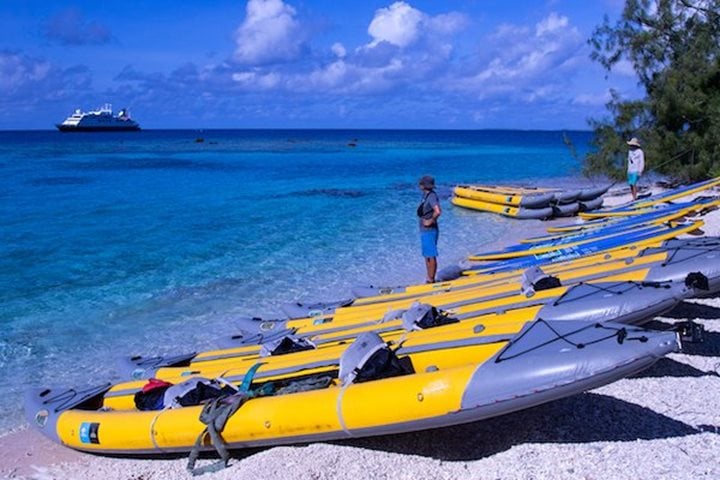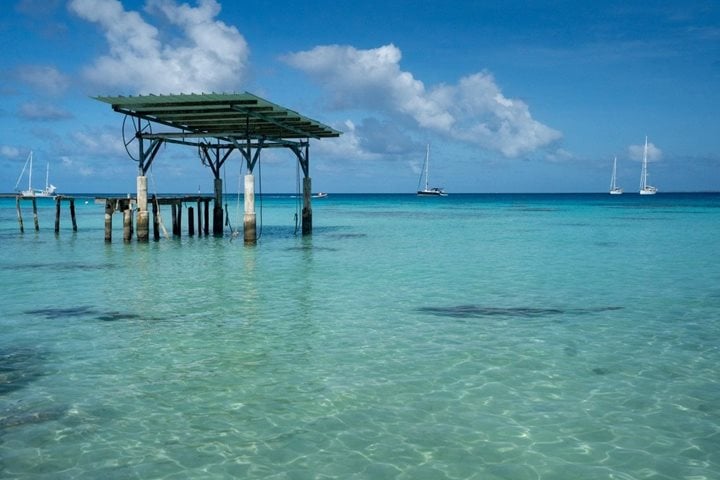We arrived off the dramatic, lush, volcanic
The island is less developed than some of the other Society Islands, such as Tahiti and Bora Bora, and many of the inhabitants still live quite simply as they grow their own food and catch fish for their own use. The island’s commercial crops include pineapples, vanilla, copra, and coffee. There are many small villages scattered around the island. Herman Melville travelled to the region in the 1840s, and he used some of the villages on the eastern coast as models for the Tahitian villages in his novel “Omoo” (1847).
There were several options to take advantage of in the morning, and guests chose between SCUBA diving, driving about the more rugged parts of the island in four-wheel drive vehicles, visiting important archaeological sites (Figure B), and hiking in the surrounding forest (Figure C). The tropical rainforest habitat is especially photogenic with its tall trees, impressive shade-giving canopy, and rich species diversity.
In the afternoon, most of our guests chose to swim and snorkel in a sandy-bottom bay that is home to many stingrays and small sharks. The rays were especially friendly and actually nuzzled people standing in the shallows. Well, this probably had something to do with the fact that some people feed the animals in this region (Figure D).
We sailed back out of the lagoon in the early evening and continued about 12 miles (20 km) southeastward over to Tahiti, where we berthed the ship during dinner. Quite a few guests, staff, and crew members went ashore for a look around before retiring for the night. Most everyone had to also prepare for an early morning start tomorrow with disembarkation.







